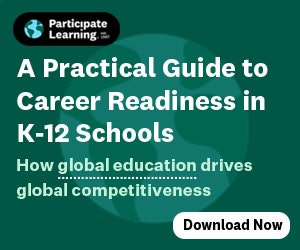
When educators hear the term “artificial intelligence,” they often associate it with ChatGPT, students cheating, or fears of their jobs being replaced.
But while it may seem contradictory, AI has the power to enhance the human element of instruction, particularly when it comes to teaching kids how to read. By demystifying and making the best use of AI, educators are empowered to focus on what matters most: providing the right instruction at just the right time, in the right way, for each individual student.
Here are four ways AI can create efficiencies and support literacy development:
1. Streamlining reading assessments
Traditional reading assessments are time consuming and often labor intensive. Teachers spend significant time administering tests, analyzing results and determining next steps for each student. AI can quickly assess foundational reading skills, fluency and comprehension, providing real-time data on strengths and instructional needs. This allows teachers to focus more on teaching and less on administrative tasks.
With this streamlined process, AI’s instant data enables teachers to quickly plan and implement targeted instruction. AI reporting systems can group students according to instructional needs and provide lesson plans for direct instruction. This greatly reduces planning time. AI’s efficiency allows educators to dedicate more time to fostering relationships with students and offering personalized, targeted support.
2. Pinpointing skill gaps
Identifying gaps in students' reading abilities can be a challenging task, especially in crowded classrooms. AI tools can help by pinpointing specific gaps in foundational reading skills, advanced morphology, and comprehension. This precision allows teachers to address areas of difficulty earlier, rather than waiting for broader or summative assessments. It allows them to move more quickly through reading intervention programs, enabling students to focus on grade-level content.
3. Personalizing practice with immediate feedback
Research highlights the importance of reading volume in literacy development—students who read more build vocabulary, fluency, and comprehension. However, traditional classroom time makes it difficult for each student to receive the individualized practice they need.
AI-powered literacy tools such as EPS Reading Assistant can offer personalized practice opportunities based on a student’s instructional needs and interests. This makes reading more engaging and instruction more efficient.
AI provides immediate feedback during reading sessions. It offers real-time correction and guidance as students progress through texts. This feedback mimics the “deliberate practice” model used by experts in music or sports, where individuals refine their skills through consistent practice and timely feedback. Just as athletes improve with repetition and real-time coaching, students can enhance their reading with targeted exercises and support.
Using AI for deliberate practice activities ensures every student has access to reading support every day. This consistency is critical in moving students quickly up and out of intervention. An individual teacher working with a full classroom of students is simply not able to provide this amount of intentional practice to every student, every day.
4. Supporting striving readers and addressing dyslexia
Addressing the needs of striving readers, particularly those with dyslexia, can be one of the most daunting challenges for educators. AI tools can be especially effective in this area, providing structured and systematic support for all students who need help, regardless of whether they have a formal diagnosis. AI-powered tools can help teachers identify specific skill gaps, offer targeted interventions for striving readers, and create lessons and practice, addressing the specific needs of each student.
Giving teachers more time
In today’s classrooms, one of the most valuable resources—but most limited—is the educator’s time. AI cannot replace human teachers, but can expand their capacity through efficient tools that can help them assess and instruct students, and provide opportunities for intentional practice. This allows more time for teachers to establish relationships and engage in direct instruction with students as only humans can.
Janine Walker-Caffrey, Ed.D., chief academic officer at EPS Learning, began her career as a special education teacher in the 1980s. She now works with EPS Learning to provide classrooms with instruction rooted in the science of reading, aimed at improving the literacy skills of all students.




























